Recommended
As the G20 India Summit approaches, India is taking a central seat on the global stage. While much attention will focus on India’s positive economic accomplishments, some of the spotlight will inevitably be on the country’s slow advances on women’s economic empowerment. Under the Brisbane 2014 Target, G20 leaders committed to reduce gender gaps in their labor force participation rates by 25 percent by the year 2025. Despite being one of the fastest growing economies in the world, female labor force participation rates in India remain low. On paper, India’s family-friendly policies are progressive – with a 2017 amendment of the Maternity Benefits Act of 1967 that increased the provision of fully paid maternity leave from 12 to 26 weeks (for women engaged in the formal sector) and required every establishment having fifty or more employees to provide childcare facilities within a prescribed distance. However, the intended impact on women’s empowerment has not materialized.
India’s weak success with childcare policy reform is lamentable but not unique. Although family-friendly policies are a promising tool to enhance children’s wellbeing, their impacts on women’s economic empowerment have been mixed. Evidence from high-income countries indicates limited positive effects, with parental leave policies generally being less effective than policies to improve childcare services. A recent World Bank study finds that countries that enacted laws to strengthen accessibility, affordability, and quality of childcare services experienced a 2 percent increase in their female labor force participation rate. While these results are encouraging, they also highlight the need for further inquiry into how different mechanisms, such as social and cultural norms, might mediate the overall effectiveness of family-friendly policies.
Social and cultural norms are important to understand, but impossible to observe in most data sources. In this regard, surveys like the State of the World’s Fathers (SOWF) provide an opportunity to gain valuable insights into the attitudes and values of populations across the world. SOWF is coordinated and led by Equimundo: Center for Masculinities and Social Justice - an organization working globally to promote gender equity in the distribution of care work. CGD partnered with Equimundo to include questions on attitudes to parental leave in the SOWF 2023 survey questionnaire. We analyzed the data to explore how sticky social norms might prevent care policies from realizing their full benefits, focusing on India as a case study.
Indian respondents have low demand for care interventions
Overall, 93% of respondents in India reported that they were satisfied with the care support available to them, paid or unpaid, to take care of their family of children. This is striking given that the supply of affordable and quality care resources is far from adequate in India. Moreover, there is not a big gender divide. Men and women are similarly content with the level of care support available to them, suggesting low overall demand for care interventions.
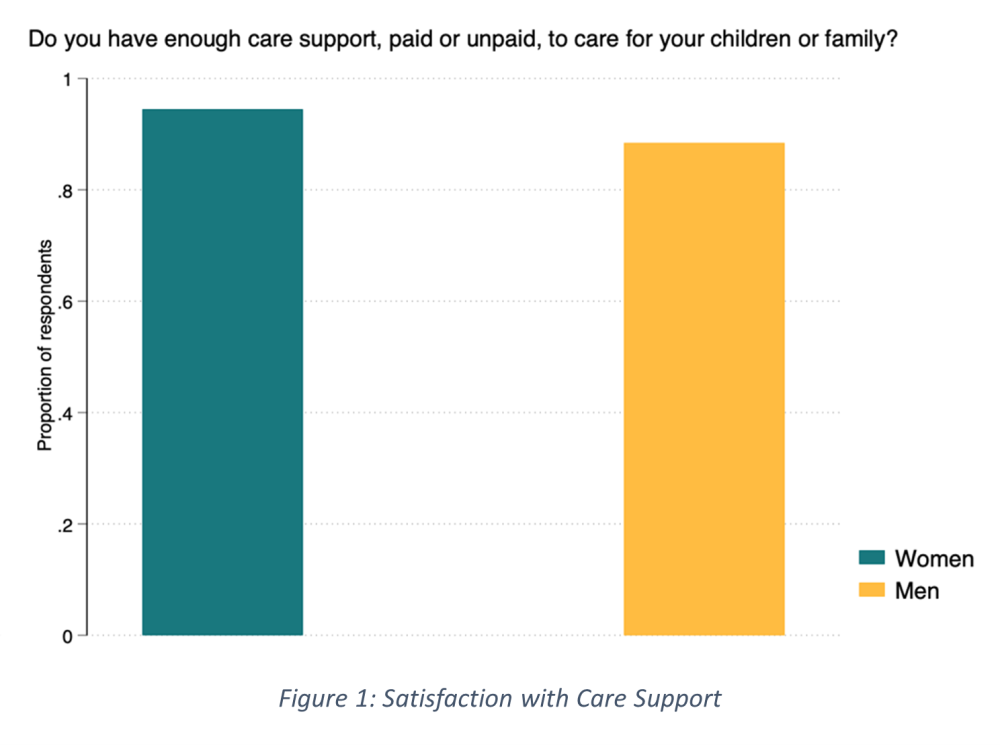
Mothers fulfil most of the demand for care services in India
Altogether, 90% of Indian women are stay-at-home mothers and 60% of men have partners who are stay-at-home parents. This suggests that most of the demand for care work in India is likely being met by the allocation of women’s time towards care provision, at the expense of their participation in economic activities.
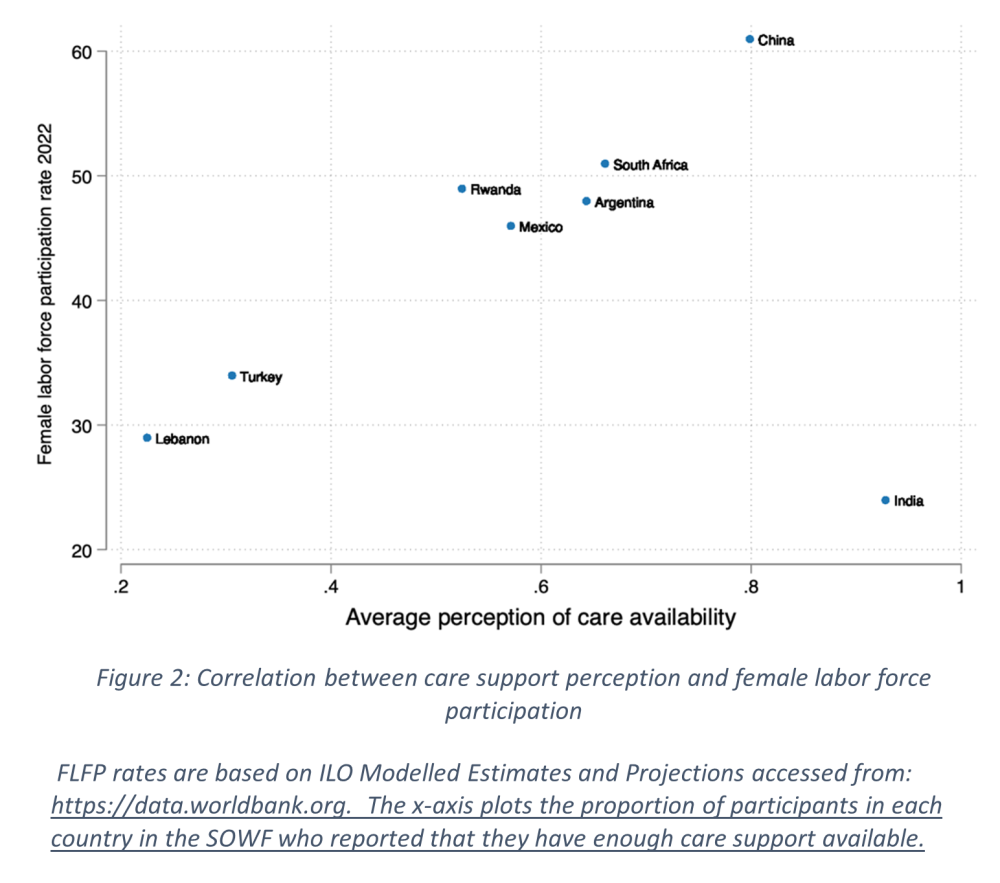
From a global perspective, while respondents in India are most satisfied by the available care resources, India has the lowest rate of female labor force participation compared to other low- or middle-income countries in the SOWF 2023 sample (Figure 2). While care provision may have facilitated female labor force participation in other countries, it appears that women in India provide care by substituting their time away from market work. Given the disproportionate share of care work undertaken by women and its negative association with female labor supply, it is remarkable that almost 90% of women surveyed in SOWF report satisfaction with the care resources available to them.
Caregiving is considered a personal responsibility, which limits the role of market-provided care
Indian respondents who indicated that they do not have access to sufficient care services did not identify supply side barriers to care as the main challenge. An overwhelming majority of these respondents expressed that care is their personal responsibility and the main challenge in providing care is their own limitation in managing it adequately (Figure 3). Recent empirical evidence also confirms that, in India, maternal time is considered superior to market-based alternatives and is even less likely to be substituted by market-provided care in the case of infants or male children. From a policy perspective it is crucial to note that in a context where caregiving is strongly identified as a personal domain, there might be limited perceived need to outsource care responsibilities to the market.

Families have low willingness to use parental leave, despite access and potential benefits
Adequate provision of maternity leave has been found to be essential in supporting the careers and wellbeing of mothers. Moreover, empirical evidence from high-income countries shows that greater access to paternity leave can be vital to promote a more egalitarian division of household responsibilities between men and women. However, the effectiveness of these policies relies on whether men and women expect family leave to be beneficial for them, and whether these perceptions translate into real demand.
SOWF data show that a sizeable proportion of men and women in India expect increased access to leave for them or their partners to be beneficial for their careers (Figure 4).
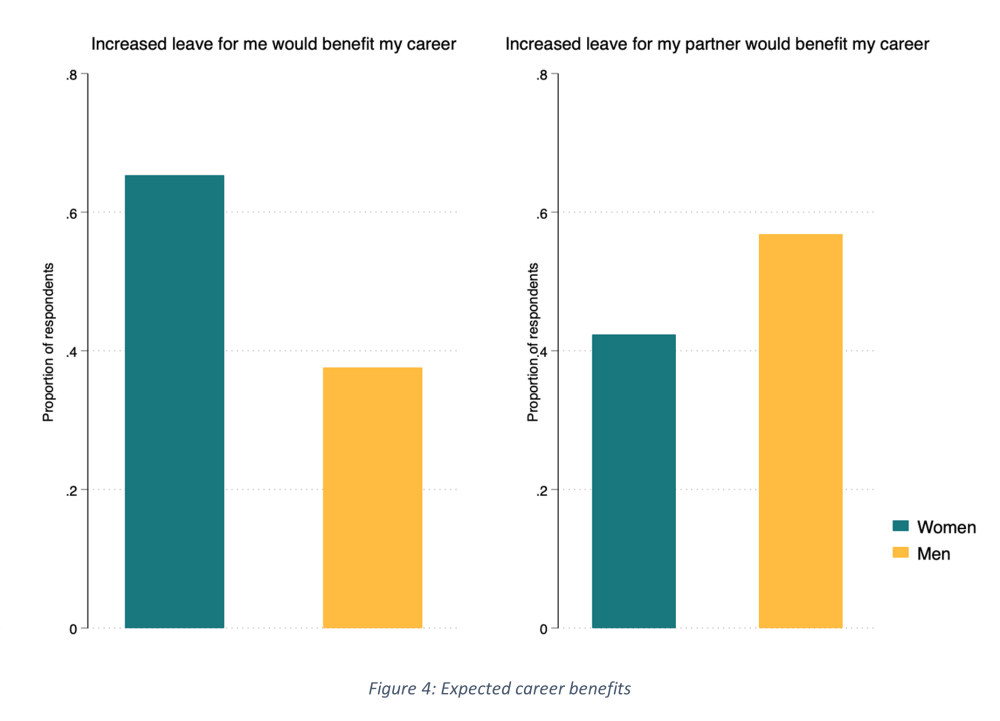
Similarly, they also expect greater availability of family leave to be beneficial for their partners, children, and themselves (Figure 5).
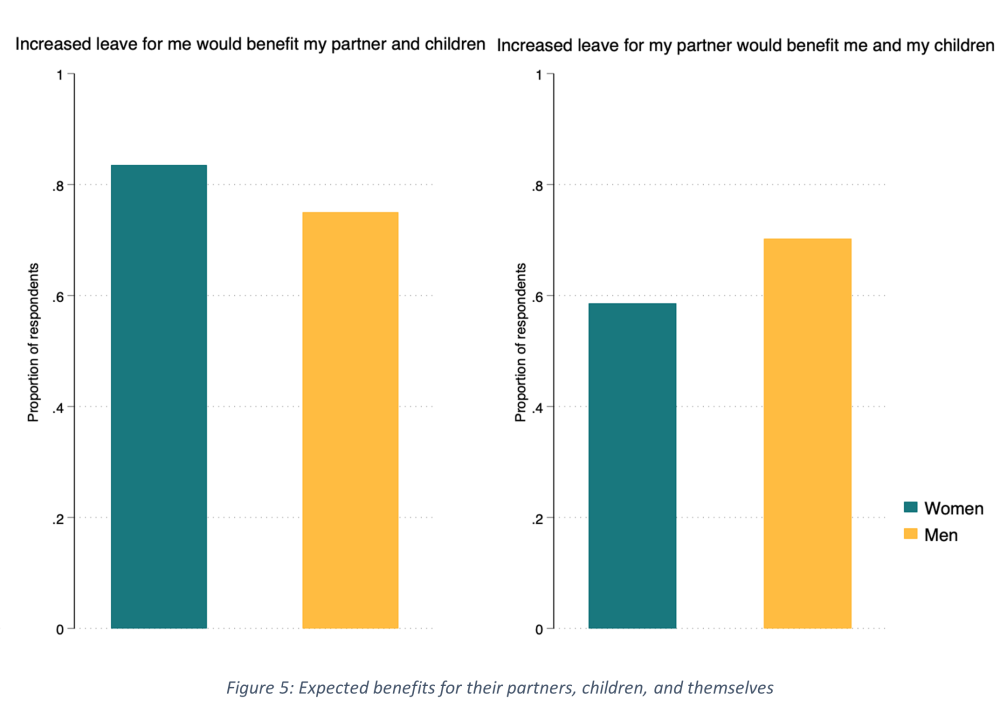
Despite this favorable view of the benefits associated with family leave, Indian respondents exhibit a lack of willingness to utilize increased leave availability. A substantial proportion of respondents reported that they, or their partners, would not take up increased leave even if they had access to it (Figure 6). In this context, it is unlikely that parental leave policy alone could successfully reduce gender disparity in the intrahousehold division of care work and improve women’s economic outcomes.
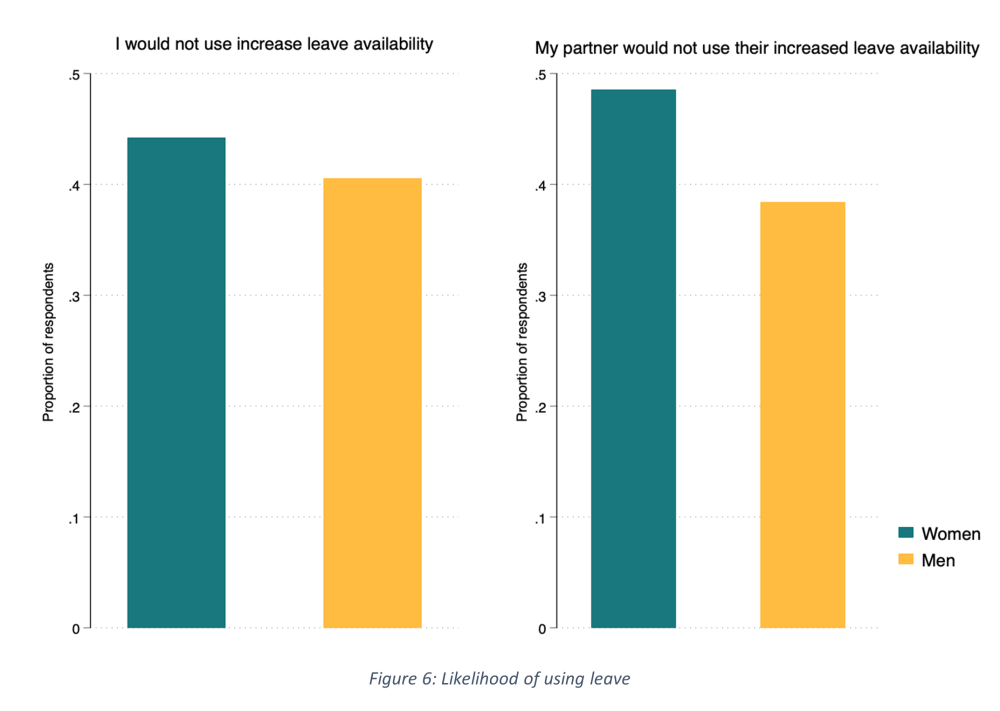
Addressing social norms
Effective legislative reform requires two essential ingredients to reduce gender disparity in care work. First, policy design should be informed by a sound understanding of relevant social norms, preferences, and an assessment of people’s willingness to use the proposed policy or service. Second, even a well-informed policy would likely benefit from complementary community-level efforts to transform attitudes related to gender inequity in care work.
With less than three months remaining in India’s G20 presidency, this is a pivotal time to tackle caregiving inequity and promote women’s economic empowerment. By engaging with the realities of social norms, India has an opportunity to reduce its persistent gender gap in labor force participation, and to set a global example on how to enhance the effectiveness of parental leave policies. The G7 Hiroshima Leaders’ Declaration included a commitment to “addressing underlying discriminatory social and gender norms” that reinforce care inequity. The G20 New Delhi Leaders’ Declaration could go further to articulate specific actions and targets in this regard.
Thank you to Taveeshi Gupta at Equimundo for partnering with us to include additional questions in the 2023 SOWF survey and for feedback on our data analysis.
Disclaimer
CGD blog posts reflect the views of the authors, drawing on prior research and experience in their areas of expertise. CGD is a nonpartisan, independent organization and does not take institutional positions.






